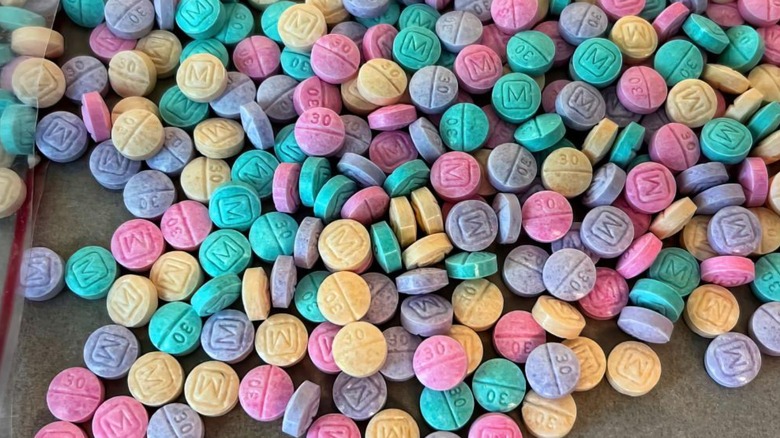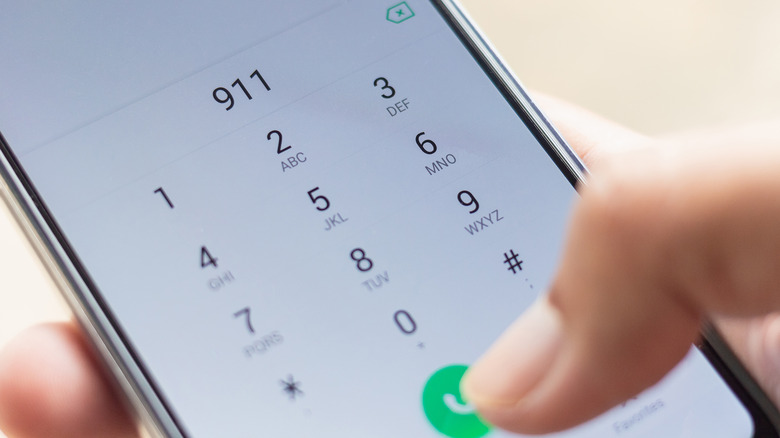What You Need To Know About The Rainbow Fentanyl Pills Proliferating In The U.S.
As a synthetic opioid drug, fentanyl is prescribed by clinicians as a topical patch or oral lozenge as a treatment for severe pain, often in advanced cancer patients, reports the U.S. Centers for Disease Control and Prevention (CDC). The U.S. Drug Enforcement Administration (DEA) states that fentanyl is 50 times the strength of heroin and 100 times more powerful than morphine. Death rates from illegally-made fentanyl have grown in recent years in the U.S. In 2020, deaths due to overdose from synthetic opioids were 18 times higher than rates in 2013 (per CDC). In 2021, synthetic opioids, including fentanyl, were responsible for 66% of all drug overdose-related deaths across the country (via DEA).
In a recent press statement, the DEA warned the public about the circulation of candy-colored fentanyl pills currently being distributed through the illicit drug market. Across 18 states, they announced that the drug has been seized in the form of pills, powder, and solid blocks that DEA representatives liken to children's sidewalk chalk. Designed to allure youth and young adults, the highly addictive and potentially life-threatening pills have been termed "rainbow fentanyl" amongst the public.
DEA advises what to do if you come across fentanyl in any form
Medical toxicologist and co-medical director of the National Capital Poison Center Dr. Kelly Johnson-Arbor, told Healthline, "This DEA alert demonstrates that fentanyl, or any illicit drug, can come in different shapes or colors and appear quite visually attractive." Despite its eye-catching appearance, however, DEA representatives explain that the drug is exceptionally potent, as per the press warning. Equivalent to roughly 10 or 15 grains of salt, only two milligrams of fentanyl is considered to be a deadly amount. The DEA stresses to the public that there is no way to know how much fentanyl is contained within the illegally-made pills or powders without the use of laboratory testing.
Addressing public misconceptions, the DEA stated via their public statement, "Despite claims that certain colors may be more potent than others, there is no indication through DEA's laboratory testing that this is the case. Every color, shape, and size of fentanyl should be considered extremely dangerous." In the event that an individual comes across the drug in any form, experts warn against handling the substance and advise immediately contacting 9-1-1 emergency services.
If you or anyone you know needs help with addiction issues, help is available. Visit the Substance Abuse and Mental Health Services Administration website or contact SAMHSA's National Helpline at 1-800-662-HELP (4357).


